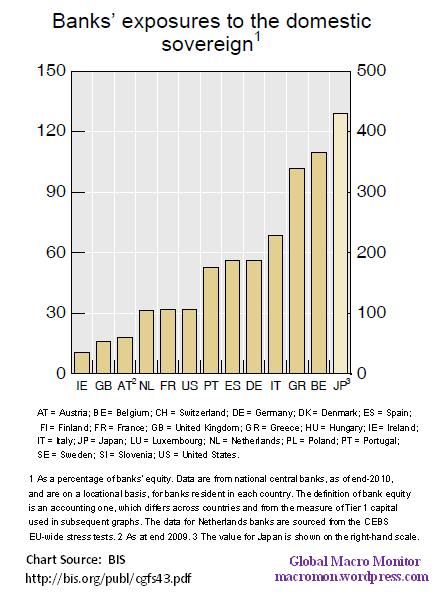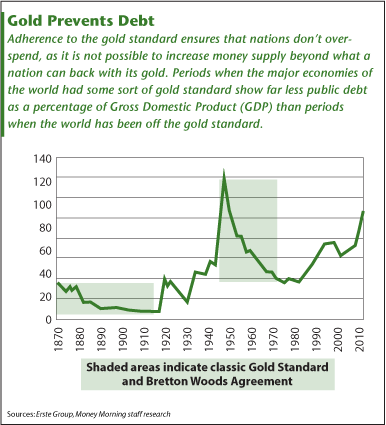As contagion sends ripple effects through the European periphery, with Italy in the eye of the storm amid rumors that the European Central Bank (ECB) has intervened and bought Italian sovereign bonds on the secondary market, analysts are coming to the conclusion that Italy is too big to bail given massive funding requirements and total debt outstanding of €1.6 trillion ($2.2 trillion).
Italian equities managed to record some gains during Tuesday’s session, up 1.3% after a terrible two-day beat-down that led to some of the largest spread moves in sovereign bonds in the European Monetary Union’s History and to what Italian’s called “Black Friday”. Yields on benchmark 10-year Italian bonds fell marginally on Tuesday and stood at 5.66%, just below Spain’s 5.96%.
With a plethora of negative news coming out of Europe on a daily basis, it is hard to attribute this Italian crisis to one event, but what is undeniable is that markets are coming to the realization that Italy is a whole different animal from Greece, Ireland, and Portugal, and that bailing it out might deliver a final blow to the beleaguered European Union. (Read Euro Contagion: Italian Equities Tank, Yields And CDS Jump).
Differences are staggering. While funding requirements for 2012 the three PIIGs that have already been bailed out totals €91 billion ($127 billion), Italy’s funding requirements reach a massive €250 billion ($350 billion). Total outstanding debt for the country run by Prime Minister Silvio Berlusconi is around €1.6 trillion ($2.2 trillion), compared with €345 million for Greece, and about €150 billion each for Portugal and Ireland, according to numbers crunched up by Nomura.
If Italy were to fail, the problem would be that it is too big to bail. Nomura’s analysts point out that current European Financial Stabilization Facility (EFSF) mechanisms were designed to deal with failure of relatively small countries being bailed out by a relatively large group of participating Eurozone countries. The equation changes for Italy.
Currently, the EFSF has an effective lending capacity of €320 billion ($448 billion) out of a total of €440 billion ($616 billion); Italy’s funding needs over the next two years exceed €500 billion ($770 billion). Not only would the EFSF (and its successor, the European Stability Mechanism-ESM-with total authorized capital estimated to be around €700 billion) lack the capacity to bail out Italy, the number of countries ready and willing to lend Rome a hand would be reduced to only two: France and Germany. (Read French Banks Hold $93B In Greek Debt As Sarkozy Announces Rollover Deal).
If Europe’s two big dogs were forced to cough up €500 billion for their Italian buddies, that would constitute approximately 10% of their combined GDP (around €5 trillion, according to Nomura). According to the note:
At some point the load will be too big for France and Germany too. For example, would France be able to sustain an AAA rating with contingent liabilities to Italy in excess of 10% of GDP?
There is not enough capacity to bail out Italy within the current bail-out infrastructure. And even an expanded EFSF may not be able to provide a credible backstop over the medium-term
One possible alternative is central bank intervention to lower rates. Traders on Tuesday were pretty sure they saw the hand of the ECB, through the Bank of Italy, in sovereign bond markets for Italian debt in a day when the y auctioned off €6.75 billion of Italian debt at a much higher rate than usual. And on Monday, a meeting of European Finance Ministers allowed for the possibility that the EFSF could be allowed to buy sovereigns in the secondary market. (Read Europe’s Debt Grind, Worry Over Italy Keep Traders Jumpy).
But this might not be enough, as FT Alphaville notes. While the ECB has already tried these interventions with Greece, Portugal, and Ireland, it has not succeeded in ensuring “depth and liquidity in those market segments which are dysfunctional,” as trade volumes in those suggest. And, given the size of the Italian bond market, with “daily turnover in May of €12 billion” and gross issuance in the third quarter of €31 billion in two, five, and ten-year bonds, it would be a disaster for the ECB to make Italy “a regular patient.”
The situation is dire indeed. The political battle to bail-out small nations in Germany was massive, eroding much of Chancellor Angela Merkel’s political capital. Bailing out Italy, then, seems like an economic, political, and social impossibility.







